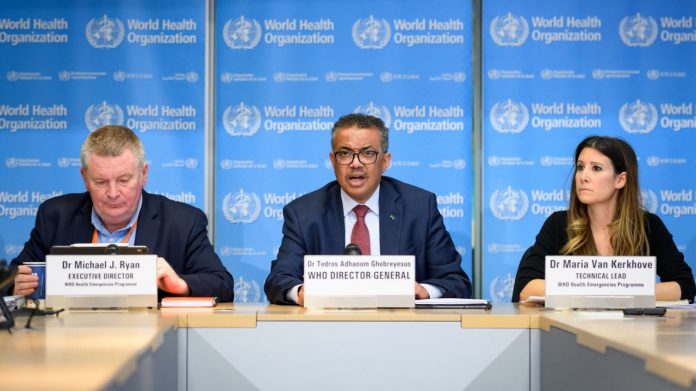Almost the entire world’s population (99%) breaths air that violates WHO air quality standards, posing a health risk. People who lives in low and middle income countries have highest levels of fine particulate matter and nitrogen dioxide.
A record number of over 6000 cities in 117 countries are now monitoring air quality, but residents are still breathing unhealthy levels of fine particulate matter and nitrogen dioxide. The findings have encouraged the World Health Organization to emphasise the need of reducing air pollution levels by reducing fossil fuel consumption and implementing other concrete initiatives.
The video was released in the run-up to World Health Day, which this year’s topic is For the first time, ground measurements of annual mean concentrations of nitrogen dioxide (NO2), a prevalent urban pollutant and precursor of particulate matter and ozone, are included in the World Health Organization’s air quality database’s 2022 update.
It is a measurements of particulate matter in the diameter of 10 m, less than PM10 or 2.5 m PM2.5. Both types of pollution are mostly caused by human activities such as fossil fuel combustion. The new air quality database is the most comprehensive ever in terms of ground-level air pollution exposure.
In comparison to the previous update, 2,000 additional cities/human settlements are now recording ground monitoring data for particulate matter, PM10 and/or PM2.5. Since the database’s inception in 2011, there has been an almost 6-fold increase in reporting. Meanwhile, the evidence base for the harm caused by air pollution to the human body is fast expanding, indicating that even low levels of numerous air contaminants cause considerable harm.
Particulate matter, particularly PM2.5, has the ability to penetrate deep into the lungs and into the circulation, resulting in cardiovascular, cerebrovascular (stroke), and respiratory effects. Evidence is accumulating that particulate matter affects other organs and causes disorders.
NO2 is linked to respiratory disorders, notably asthma, which can result in respiratory symptoms (coughing, wheezing, or trouble breathing), hospitalizations, and emergency department visits. Last year, the World Health Organization (WHO) amended its Air Quality Guidelines to make them more severe in order to enable nations properly assess the healthiness of their local air.
“Recent energy problems underline the urgency of hastening the transition to cleaner, healthier energy systems,”Said WHO Director-General Dr Tedros Adhanom Ghebreyesus. “Main reason of pollution is high fossil fuel costs, energy security, and the urgent need to address the dual health issues of air pollution and climate change highlight the urgent need toward a society that move faster less reliant on fossil fuels.” Governments may take a variety of actions to enhance air quality and public health.
Several countries are taking initiatives to improve air quality, but WHO is urging a quick ramp-up of efforts to:
Adopt or amend national air quality standards in accordance with the most recent WHO Air Quality Guidelines and put them into effect. Air quality should be monitored and pollution sources should be identified. Encourage people to switch to clean energy for cooking, heating, and lighting in their homes.
We need to Build public transportation systems because it is safe and cheap or as well as networks that are favourable to pedestrians and cyclists and second step is that we need to establish Enforce higher car emissions and efficiency regulations that doing inspection and maintenance.
One more is that we need to do investment in energy efficient houses and alternative energy sources and doing in work for Increase efficiency of industry and other waste management. Reduce the incineration of agricultural waste, forest fires, and some agro-forestry operations (e.g. charcoal production).
Particulate pollution is lower in higher-income nations, although nitrogen dioxide pollution is a problem in most cities. In the 117 nations that monitor air quality, 17 percent of cities in high-income countries have air quality that is below the WHO’s PM2.5 or PM 10 guidelines.
In low- and middle-income nations, air quality is only met in less than 1% of cities, according to WHO guidelines. Low- and middle-income nations are still exposed to higher levels of hazardous PM than the global average, although NO2 patterns differ, with less of a difference between high- and low- and middle-income countries.
Almost 4000 cities/human settlements in 74 nations gather NO2 data. Only 23% of individuals in these regions breathe yearly average NO2 concentrations that match the recently revised version of the WHO’s Air Quality Guidelines, according to their assessments.
“One more that we need to keep in mind is that, after surviving a pandemic and there are still 7 million needless deaths and many years of good health lost due to air pollution.” When we look at the pile of air pollution data, facts, and remedies accessible, that’s exactly what we’re saying.
Dr Maria Neira, WHO Director, Department of Environment, Climate Change and Health, said, “Too many investments are still being poured into a dirty environment rather than clean, healthy air.”
Monitoring has to be improved?
People in low- and middle-income nations are the ones who are most affected by pollution. They are also the least well-served in terms of air quality monitoring, but this is changing. Europe and, to a lesser extent, North America continue to have the most comprehensive air quality statistics.
While PM2.5 measurements are still unavailable in many low- and middle-income nations, there have been significant increases in measurements between the last database update in 2018 and this one, with an extra 1500 human settlements monitoring air quality in these countries.
The World Health Organization’s Air Quality Guidelines?
The evidence base supporting the harm caused by air pollution is quickly developing, and it shows that even low levels of numerous air contaminants cause considerable harm. The WHO responded this year by amending its Air Quality Guidelines to reflect the findings and making them more strict, particularly for PM and NO2, a decision backed by the health community, medical societies, and patient organisations. The 2022 database intends to measure progress toward the Sustainable Development Goals by monitoring the status of the world’s air.
2022 is World Health Day?
The 7th of April is World Health Day, which will focus worldwide attention on the critical steps required to keep humanity and the planet healthy, as well as inspire a movement to establish societies that prioritise well-being. According to the World Health Organization, more than 13 million people die each year due to preventable environmental causes throughout the world.


